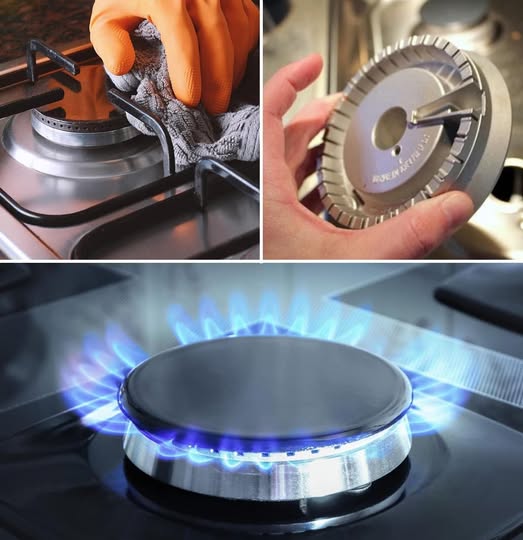Safety Precautions Before Cleaning
Prioritize safety with these steps:
- Disconnect Power: Ensure the stove is turned off and unplugged to prevent accidental ignition.
- Shut Off Gas Supply: Turn off the gas valve to prevent leaks during maintenance.
- Cool Down: Wait until all components are completely cool to avoid burns.
Step-by-Step Guide to Cleaning Burners
- Remove Burner Components:
- Carefully lift off the grates, burner caps, and burner heads.
- Consult your stove’s manual for specific instructions, as designs may vary.
- Soak Removable Parts:
- Place the burner heads and caps in a solution of warm water and dish soap or a mixture of equal parts distilled white vinegar and water.
- Let them soak for 20-30 minutes to loosen grime.
- Clean Burner Ports:
- Use a non-abrasive scrub pad or an old toothbrush to gently scrub away loosened debris.
- For stubborn clogs in the burner ports, carefully insert a straightened paper clip to dislodge debris. Avoid using toothpicks, as they can break off and cause further blockages. The Spruce
- Rinse and Dry:
- Thoroughly rinse all components under running water to remove any cleaning solution residue.
- Dry them completely with a soft cloth and allow them to air dry to ensure no moisture remains.
- Clean the Stove Surface:
- Wipe down the stove’s surface with a damp cloth to remove any spills or debris.
- For tough stains, a paste of baking soda and water can be applied, then wiped clean.
- Reassemble the Stove:
- Once all parts are thoroughly dry, reassemble the burner heads, caps, and grates in their respective positions.
- Test the Burners:
- Reconnect the gas supply and power.
- Light each burner to ensure a strong, even flame.
Preventative Maintenance Tips
To maintain optimal stove performance:
- Regular Cleaning: Wipe down the stove surface and grates after each use to prevent buildup.
- Monthly Deep Cleaning: Perform a thorough cleaning of all components at least once a month.
- Use Spill Guards: Consider using removable gas range protectors to catch spills and prevent them from reaching the burners.
- Avoid Harsh Tools: Never use sharp objects or abrasive materials that can damage components.
When to Seek Professional Help
If you encounter persistent issues despite regular cleaning, such as:
- Continuous Ignition Problems: Burners that consistently fail to ignite.
- Unusual Odors: Smelling gas or burnt residues during operation.
- Damaged Components: Visible wear or damage to burner parts.
In such cases, it’s advisable to consult a certified appliance technician to inspect and service your stove.
Conclusion
Regular maintenance of your gas stove is crucial for efficient cooking, energy savings, and safety. By routinely cleaning and inspecting your stove’s components, you can prevent clogs, enhance performance, and extend the appliance’s lifespan. Incorporate these practices into your kitchen routine to ensure a reliable and enjoyable cooking experience.
For a visual demonstration of the cleaning process, you might find this video helpful:
ADVERTISEMENT

